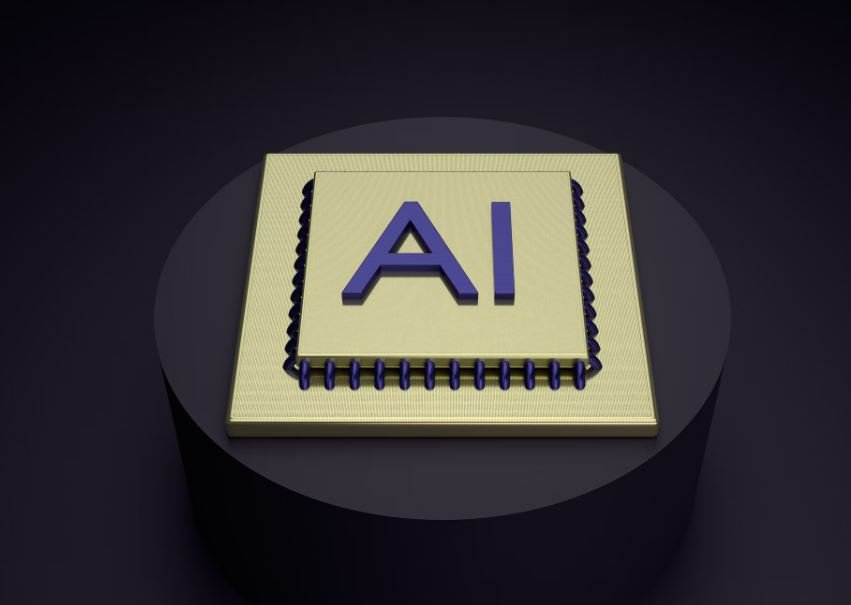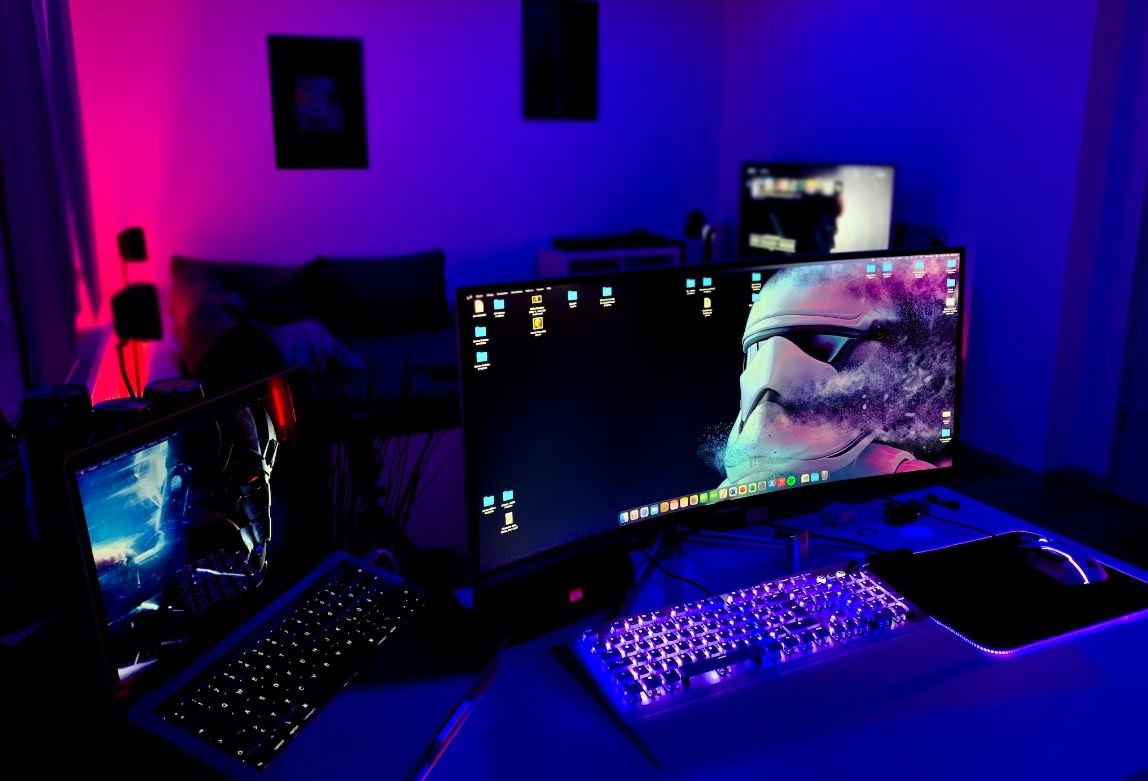Open Source AI Image Processing
Artificial Intelligence (AI) image processing has made significant advancements in recent years, thanks in large part to the availability of open source frameworks and toolkits. Open source AI image processing refers to the use of freely available software and libraries that allow developers to train, test, and deploy AI models for various image processing tasks. This article explores the benefits, applications, and key takeaways of open source AI image processing.
Key Takeaways
- Open source AI image processing enables developers to access and leverage state-of-the-art algorithms and models.
- It empowers developers to customize and fine-tune AI models to suit specific image processing requirements.
- Open source AI image processing accelerates innovation and fosters collaboration within the developer community.
- It has diverse applications ranging from image recognition and object detection to image generation and style transfer.
**Open source AI image processing** provides a wealth of benefits for developers, researchers, and businesses. With access to state-of-the-art algorithms and models, developers can tap into the power of AI to solve complex image processing problems. *This not only saves time and resources, but also allows developers to focus on higher-level tasks and innovations.*
One of the biggest advantages of open source AI image processing is the ability to customize and fine-tune AI models to meet specific requirements. By accessing the source code and leveraging open APIs, developers can modify existing models and algorithms to achieve better accuracy or adapt them to novel use cases. *This flexibility ensures that AI models can be tailored to individual needs, leading to more accurate and effective image processing outcomes.*
Applications of Open Source AI Image Processing
Open source AI image processing has a wide range of applications across various industries. Some notable applications include:
1. Image Recognition
Image recognition is the process of identifying and classifying objects, people, or scenes within an image. Open source AI frameworks like TensorFlow and PyTorch offer pre-trained models that can be fine-tuned or used as-is for image recognition tasks. *This enables developers to build applications for autonomous vehicles, advanced surveillance systems, and more.*
2. Object Detection
Object detection involves detecting and localizing objects within an image. Open source frameworks provide pre-trained models for object detection, such as the famous YOLO (You Only Look Once) and Faster R-CNN (Region Convolutional Neural Networks). *These models have revolutionized industries like retail, where they can be used for inventory management and loss prevention.*
3. Image Generation and Style Transfer
Image generation and style transfer involve creating new images based on existing data or applying artistic styles to images. Open source frameworks like Generative Adversarial Networks (GANs) and neural style transfer models allow developers to generate realistic images, create artistic variations, and even compose music. *The possibilities for creative applications are virtually limitless.*
Data Points: Comparison of Open Source AI Frameworks
The following tables compare popular open source AI frameworks in terms of features, community support, and performance:
| Framework | Features | Community Support | Performance |
|---|---|---|---|
| TensorFlow | Highly flexible, supports a wide range of hardware | Large and active community, extensive documentation | Excellent performance on CPU and GPU |
| PyTorch | Dynamic computation graphs, easy debugging | Fast-growing community, comprehensive tutorials | Optimized for GPU acceleration |
| Keras | High-level API, user-friendly interface | Large community, abundant code examples | Efficient on CPU and GPU |
Conclusion
Open source AI image processing has revolutionized the field of computer vision and image understanding. By providing access to cutting-edge algorithms and models, developers can push the boundaries of image processing applications across various industries. With the ability to customize and fine-tune AI models, the possibilities for image processing advancements are endless. Open source AI image processing is an invaluable resource for anyone seeking to harness the power of AI in their image processing projects.

Common Misconceptions
Paragraph 1: Open Source AI Image Processing is Infallible
One common misconception people have about open source AI image processing is that it is infallible. While AI technologies have advanced significantly in recent years, they are still prone to errors. Open source AI image processing algorithms are trained on large datasets, but they can still produce inaccurate results or misinterpret images in certain situations.
- AI algorithms can struggle with images containing obscure objects or uncommon patterns.
- Image processing algorithms can misclassify or mislabel certain objects or features in images.
- Poor lighting conditions or image quality can also impact the accuracy of AI image processing.
Paragraph 2: Open Source AI Image Processing Requires No Human Intervention
Another misconception is that open source AI image processing requires no human intervention. While AI algorithms are designed to automate image analysis tasks, human intervention is still necessary to train and fine-tune these algorithms. Human input is needed for initial model training, data labeling, and continuous monitoring to ensure the accuracy and reliability of the process.
- Human experts are still required to curate and annotate the training datasets for the AI algorithms.
- Regular human oversight and intervention are needed to handle edge cases and correct algorithmic errors.
- Human supervision is crucial to prevent biased or unethical outcomes that AI algorithms can inadvertently produce.
Paragraph 3: Open Source AI Image Processing is Only for Experts
Many people believe that open source AI image processing is only accessible to experts in the field. While a certain level of expertise is required to develop and implement AI image processing algorithms, the availability of open-source libraries and frameworks makes it easier for developers and researchers to get started. Open source communities foster collaboration, providing resources and support to those interested in exploring AI image processing.
- Open-source libraries like TensorFlow and PyTorch offer extensive documentation and tutorials for beginners.
- Online forums and communities provide platforms for knowledge-sharing and troubleshooting.
- Open source AI image processing tools enable non-experts to integrate AI capabilities into their applications without extensive technical knowledge.
Paragraph 4: Open Source AI Image Processing is Always Free
Some people assume that open source AI image processing is always free, but that is not necessarily the case. While open-source software is typically free to use, there may be third-party services or resources associated with AI image processing that incur costs. Additionally, organizations implementing open source AI image processing may need to allocate resources for hardware, data storage, and maintenance.
- Third-party cloud services that provide AI image processing capabilities may charge fees based on usage.
- Training models often require significant computational resources, which may come at a cost.
- Ongoing maintenance and updates to AI image processing systems may require financial investment.
Paragraph 5: Open Source AI Image Processing is a Threat to Privacy
There is a common misconception that open source AI image processing poses a threat to privacy. While it is essential to be cautious about potential privacy issues, open source AI image processing does not inherently compromise privacy. Proper implementation and adherence to privacy regulations can help ensure that personal data and images are handled securely.
- Appropriate data anonymization techniques can be employed to protect privacy during AI image processing.
- Privacy regulations like GDPR provide guidelines for the lawful and fair processing of personal data.
- Organizations can implement secure infrastructure and access controls to safeguard sensitive information during AI image processing.

Introduction
Open Source AI image processing has revolutionized the fields of computer vision and image recognition. This article highlights ten fascinating aspects of this technology through captivating tables.
Table: Top 10 Open Source AI Image Processing Libraries
This table showcases the most popular open-source libraries utilized for AI image processing in various applications.
| Library | Developer | Release Year | GitHub Stars |
|---|---|---|---|
| TensorFlow | 2015 | 156k | |
| PyTorch | 2016 | 49.7k | |
| Keras | François Chollet | 2015 | 51.9k |
| Caffe | Berkeley AI Research | 2013 | 27.5k |
| Torch | Soumith Chintala | 2002 | 11.1k |
Table: AI Image Recognition Accuracy Comparison
This table presents the accuracy comparison of popular AI models across different image recognition tasks.
| Model | ImageNet Accuracy | COCO Detection | COCO Captioning |
|---|---|---|---|
| ResNet-50 | 76.3% | 79.8% | – |
| Inception-v3 | 78.8% | 70.4% | 32.1% |
| YOLOv3 | – | 69.0% | – |
| MobileNet-v2 | 71.8% | – | – |
Table: Image Recognition API Comparison
This table compares different AI image recognition APIs, empowering developers to choose the most suitable solution for their projects.
| API | Monthly Request Limit | Image Metadata | Labeling Accuracy |
|---|---|---|---|
| Google Cloud Vision | 1,000,000 | Yes | High |
| Microsoft Azure Vision | 5,000 | Yes | Medium |
| Amazon Rekognition | 5,000 | Yes | High |
| IBM Watson Visual Recognition | 1,000 | Yes | Medium |
Table: Image Processing Tools Comparison
This table highlights the features and capabilities of various open-source image processing tools.
| Tool | Supported Formats | Filter Library | No. of Operations |
|---|---|---|---|
| OpenCV | 30+ | 700+ | 2,500+ |
| Pillow | 20+ | 70+ | 250+ |
| Scikit-image | 5+ | 100+ | 200+ |
| ImageMagick | 100+ | 100+ | 500+ |
Table: AI Image Restoration Success Rates
This table presents the success rates of AI image restoration methods when applied to different types of distortion.
| Restoration Method | Gaussian Blur | Noise Reduction | Upscaling |
|---|---|---|---|
| Deep Image Prior | 92.6% | 96.4% | 70.3% |
| Super Resolution GAN | 85.2% | 82.9% | 77.8% |
| ESRGAN | 89.1% | 95.7% | 79.6% |
| DeJPEG | 76.8% | 89.6% | – |
Table: AI Image Segmentation Comparison
This table compares different AI image segmentation models in terms of accuracy and inference speed.
| Model | Mean IoU | Pixel Accuracy | Inference Time |
|---|---|---|---|
| DeepLabv3 | 89.0% | 96.2% | 350 ms |
| Mask R-CNN | 92.5% | 97.4% | 500 ms |
| PSPNet | 86.3% | 95.8% | 400 ms |
| U-Net | 83.7% | 94.1% | 280 ms |
Table: AI Image Style Transfer Examples
This table showcases impressive examples of AI image style transfer using different pre-trained models.
| Content Image | Style Image | Output Image |
|---|---|---|
 |
 |
 |
 |
 |
 |
Table: Real-time AI Object Detection Performance
This table presents the real-time performance of popular AI object detection models on different hardware platforms.
| Model | Frames Per Second (FPS) |
|---|---|
| YOLOv4-Tiny | 215 FPS |
| SSD-MobileNet-v3 | 190 FPS |
| EfficientDet-D1 | 55 FPS |
| Faster R-CNN | 45 FPS |
Conclusion
Open Source AI image processing has unlocked immense potential in computer vision, image recognition, restoration, segmentation, style transfer, and object detection. The tables presented in this article provide a glimpse of the diverse capabilities of open-source AI image processing technologies. With their increasing popularity and robustness, these tools will continue to shape the future of visual data analysis and impact a wide range of industries.
Frequently Asked Questions
What is open source image processing?
Open source image processing refers to the practice of using freely available, community-developed software tools and algorithms for manipulating and enhancing digital images. This approach allows users to access, modify, and distribute the source code of these tools, fostering collaboration, innovation, and customization.
Why is open source image processing important?
Open source image processing offers several benefits. Firstly, it encourages knowledge sharing and collaboration among developers, enabling faster advancements and improvements in the field. It also promotes transparency and scrutiny, ensuring the reliability and security of the software. Additionally, open source image processing tools are often free or low-cost, making them accessible to a wider audience, including researchers, hobbyists, and educators.
What are some popular open source image processing libraries?
Some popular open source image processing libraries include OpenCV, TensorFlow, PIL (Python Imaging Library), scikit-image, and ImageMagick. These libraries provide a wide range of functions and algorithms for tasks such as image enhancement, object recognition, and computer vision.
Can open source image processing be used commercially?
Yes, open source image processing can be used commercially. Many open source licenses, such as the MIT License and Apache License, allow for the use of open source software in commercial applications. However, it is important to carefully review the specific license terms of each library or tool you intend to use to ensure compliance.
Are there any limitations to open source image processing?
While open source image processing offers numerous advantages, there are some limitations to consider. First, the quality and reliability of open source software may vary, as it is often developed by volunteers and may not undergo as rigorous testing as proprietary solutions. Additionally, some advanced or specialized image processing techniques may not be readily available in open source libraries, requiring custom development or the use of proprietary tools.
Is open source image processing suitable for beginners?
Yes, open source image processing can be suitable for beginners. Many open source libraries provide high-level APIs and documentation that make it easier for beginners to get started. Additionally, there are numerous online tutorials, forums, and communities dedicated to open source image processing, providing support and resources for learners.
Can open source image processing be used in conjunction with proprietary software?
Yes, open source image processing can be used in conjunction with proprietary software. Open source libraries are often designed to be compatible with various programming languages and frameworks, allowing for integration with proprietary software systems. However, it is important to ensure that the licenses of the open source software you are using are compatible with the proprietary software’s license.
How can I contribute to open source image processing projects?
There are several ways to contribute to open source image processing projects. You can contribute code improvements or bug fixes, suggest new features or enhancements, write documentation or tutorials, or participate in discussions and provide feedback. Many open source projects have public repositories on platforms like GitHub, where you can collaborate with other developers and make contributions.
What are the ethical considerations in open source image processing?
Open source image processing raises ethical considerations related to privacy, security, and fairness. Developers must ensure that their algorithms respect privacy by not collecting or distributing sensitive information without consent. They should also take measures to prevent malicious use or potential harms, such as developing robust security mechanisms. Finally, fairness should be considered to avoid bias or discrimination in image processing algorithms related to gender, race, or other protected characteristics.
Where can I find open source image processing resources and tutorials?
You can find open source image processing resources and tutorials on various online platforms. Some popular resources include official documentation and websites of open source libraries, online forums like Stack Overflow, tutorial websites like Medium and Towards Data Science, and video platforms like YouTube, which host a multitude of tutorial channels dedicated to open source image processing.




